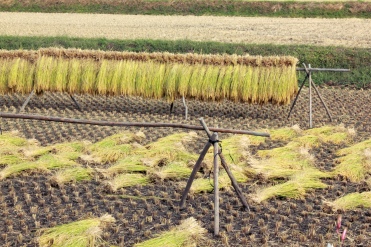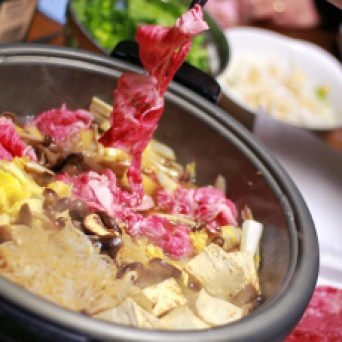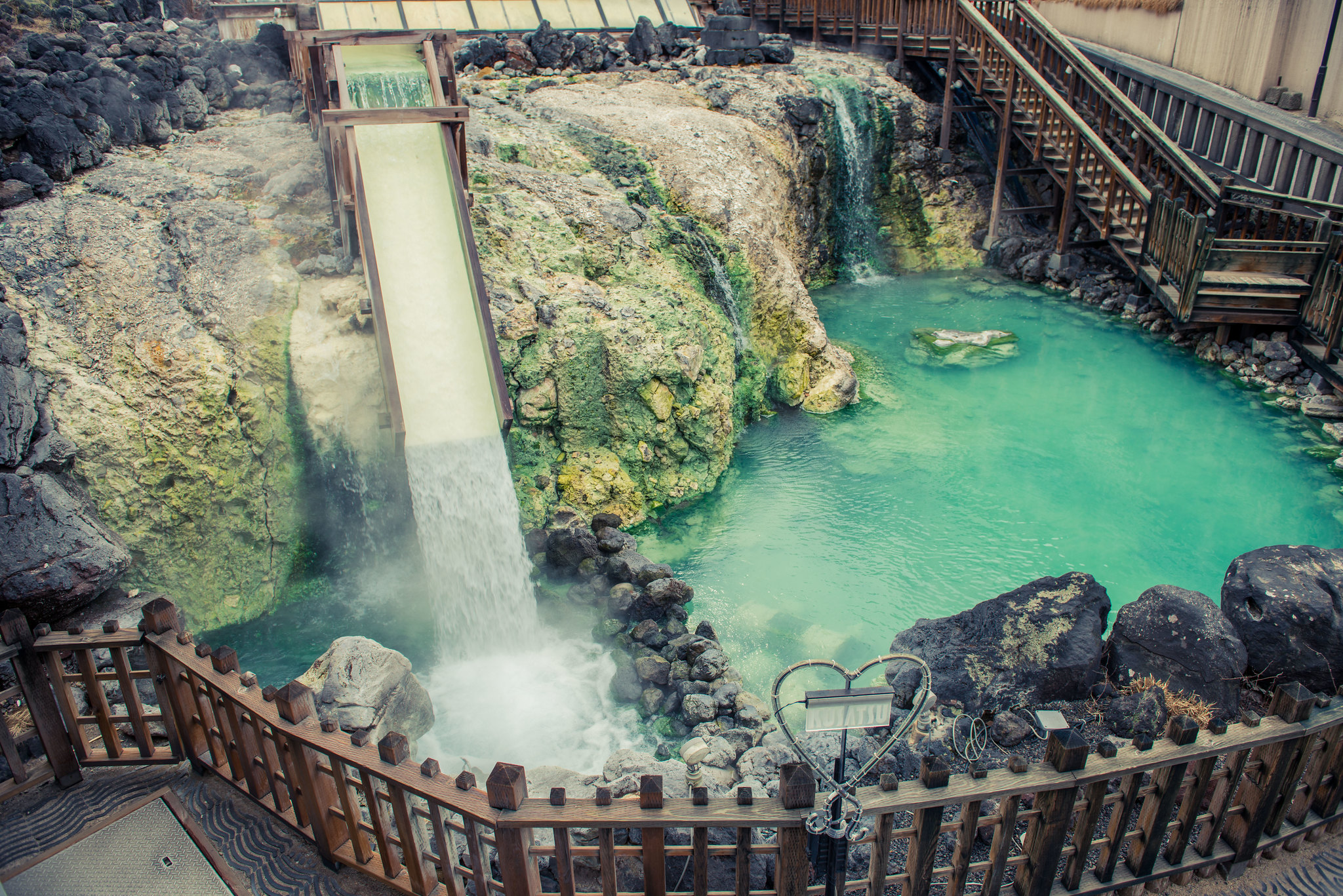It’s no secret that one of the things I love about the countryside is the abundance of rice fields blowing in the breeze, as the dragonflies circle overhead. ( See my post on how A Rice Field is Born ) But the time comes every year when it’s time to harvest the grains. It’s quite beautiful to see the months of growth come to its natural closure, but tempered by the face that soon the fields will be empty, and that winter is not far behind.
When it comes to the harvest, i was surprised to see that many people still do it the way it’s been done for centuries. First water is drained from the rice paddy. Then it is cut by hand, further drained of water, and hung out to dry.

Once the rice has been cut, it’s tied into bundles. These bundles are stretched out over hand-made wooden platforms to dry and absorb the flavors of the sun.
 I do my best to pass these structures by without taking a photo, but as you can see I usually fail. There’s something about the simple honesty, the unchanged tradition, that appeals to my senses.
I do my best to pass these structures by without taking a photo, but as you can see I usually fail. There’s something about the simple honesty, the unchanged tradition, that appeals to my senses.
But certainly not everyone still harvests rice this way. People are busy, and where theres a need there is a service! You can conveniently hire someone to come and cut, dry, de-husk and package your rice for you. It quite surprised me how much rice is gained from a single field.

At this point you will likely be left with a very large stack of backs, packed full of rice.
Whether your preference is brown or white rice… the country side is dotted with these stations where you can polish your rice to the required level of perfection.
There’s a vending machine for almost everything in Japan! Insert your coins, and the magic starts to happen.
The Rice Polishing In Action
Now that your pantry is stocked, and you look out over your empty field… it’s a reminder that before long we’ll be seeing the first snows of winter. And with it comes an entirely new kind of beauty.






















































